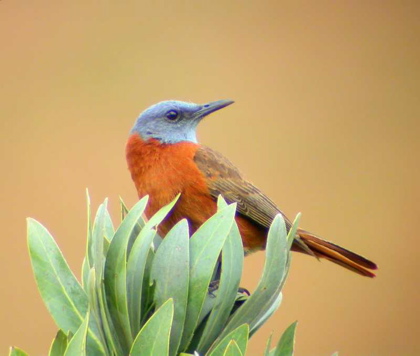
As you may know, I have just returned from doing a bird-ringing course in Port Elizabeth. The 8-day course was held as part of the BirdLife Eastern Cape's 60th anniversary celebrations.

During the week, we also attended evening functions which included a wonderful photographic competition, a talk by BirdLife SA's chief, Mark Anderson on his Lesser Flamingos at Kamphers Dam, Kimberley and also a talk by Warwick Tarboton on nests and eggs.
Tern-ringer, Tony Tree with Mark
Anderson from BLSA.
The club members in Port Elizabeth really live up to the name of the city being the Friendly city. What wonderful, welcoming and accommodating people. I had a great time getting to know them all and they were very happy to have me join them from such a far-flung town. I stayed with a lovely lady called Briar Wright and she was an absolute gem.
Briar Wright (right) with friend Siggie.
The mornings started VERY early each day. I had to be up at 4.00am to be picked up at 4.45am. As I didn't have my own car there, I was chauffered around by Albert, the leader of the ringing trainers and my new friend, Gary Sparrow, a fellow-trainee from the Grahamstown area.
Gary won the 2nd prize in the photo competition
First thing that gets done, even before having coffee, is putting up the nets. Sometimes we put up to half a kilometre of nets. This has to be done before first light as that is when the birds get up.
Once the birds start moving, they fly into these fine mist-nets and get caught and we have to start taking them out very carefully and putting them into the bird bags which get hung on a rod, waiting to be processed.
We measure various parts of the bird such as it wing, beak, and tarsus (leg). We count the feathers and check their condition and of course, put a ring on it! We also weigh them and try to decide if it is an adult or juvenile and what sex they are... not always easy to see.
A Bar-throated Apalis
being processed
The beautiful White-starred Robin, my favourite bird of the week.
The high-light of my week was definitely the White-starred Robin which is not seen all that often as it is a forest bird and quite secretive. The next best bird was the Knysna Turaco.
A gorgeous Knysna Turaco...
Top L: me with Swift Tern Top R: Me with African Penguin & staff of SAMREC
Bottom L: Malachite Kingfisher Bottom R: Little Rush Warbler
I also got to ring 2 African Balck Oystercatchers, 3 Ruddy Turnstones, a Swift Tern and a Penguin. Other great birds to ring were a Malachite Kingfisher, a Bar Throated Apalis and quite a few warblers.

The worst birds to ring were the Southern Masked Weaver, the Southern Boubou, the Black-collared Barbet (the first one to draw blood), and the worst by far, a juvenile Common Fiscal.... eina!! They bite HARD!
L: This Southern Boubou just didn't want to let go.
There is something so wonderful about being able to hold these goregous birds in your hands and see them up close. They are not harmed in any way and hopefully, the ring will be recovered or re-spotted again in the future and this information will help us to learn more about them.
L: Have a look at that beak tooth... no wonder blood was spilled.
In total I ringed 69 birds of 29 different species. For me to obtain my ringers licence, I need to ring 500 birds altogether of 50 different species so I have a long way to go. I have invited other ringers to join me here in Franschhoek for some ringing sessions so if you know of any good areas, away from people, with a lot of birds, let me know as we are looking for some good ringing spots.



















